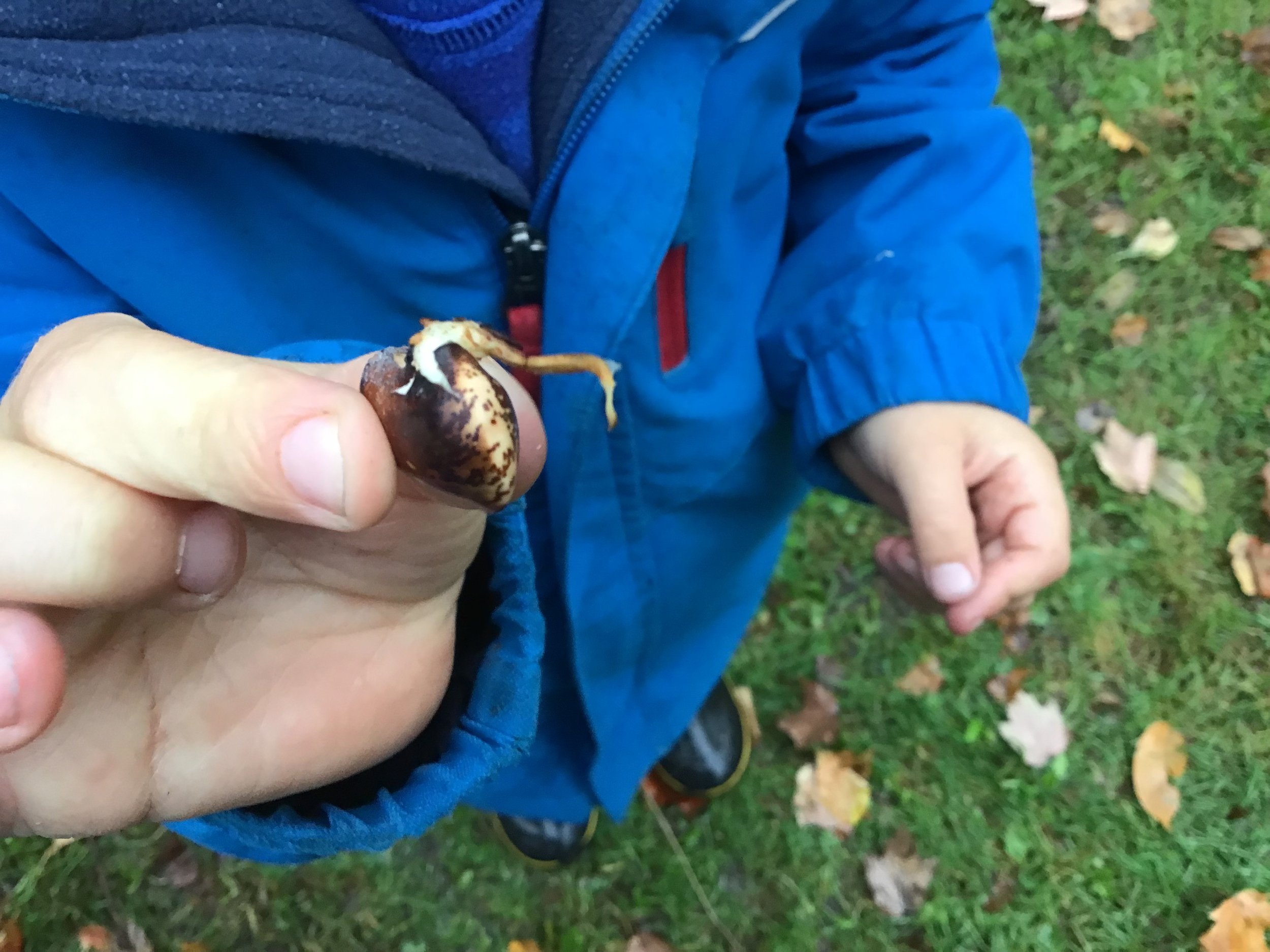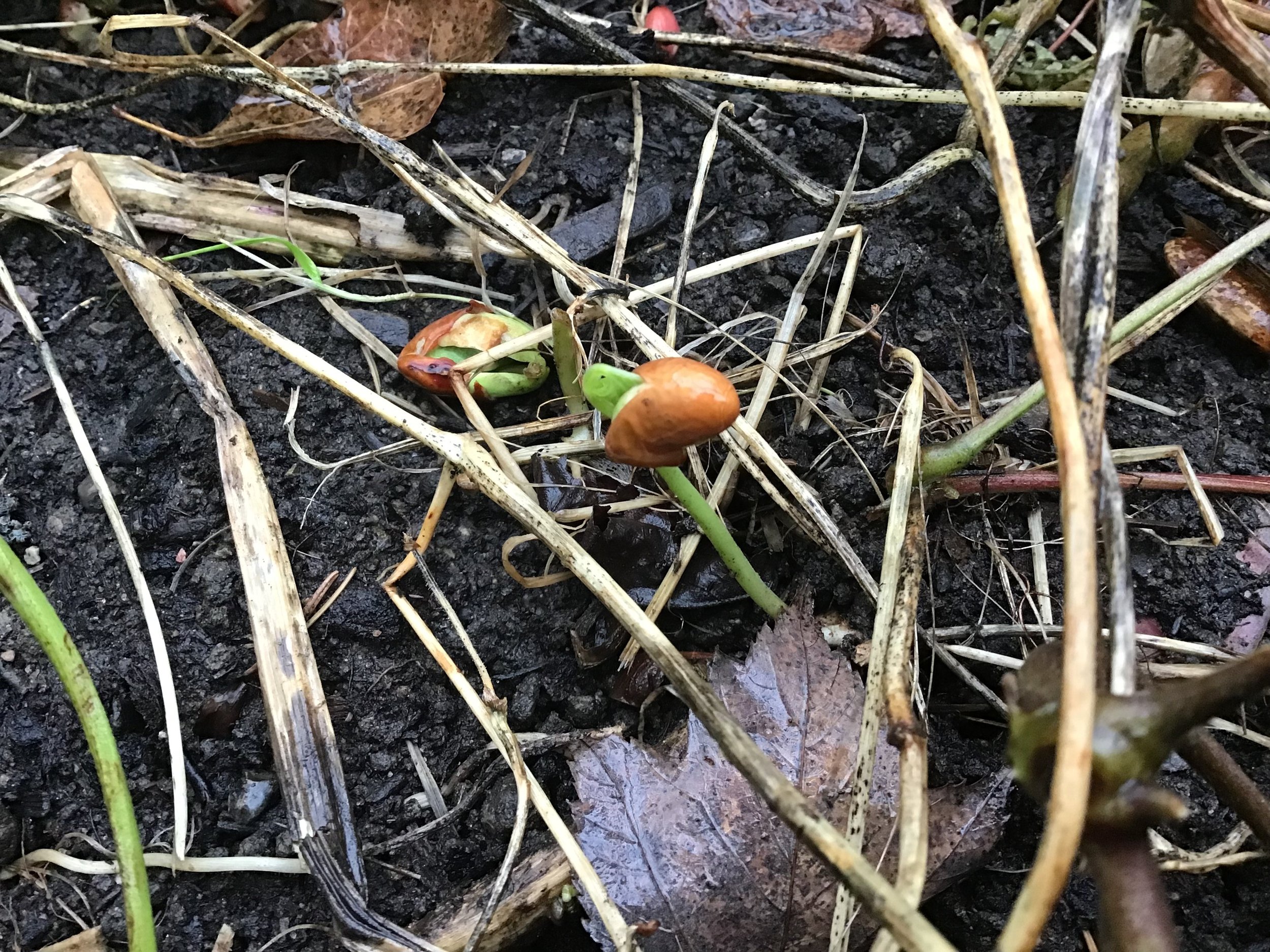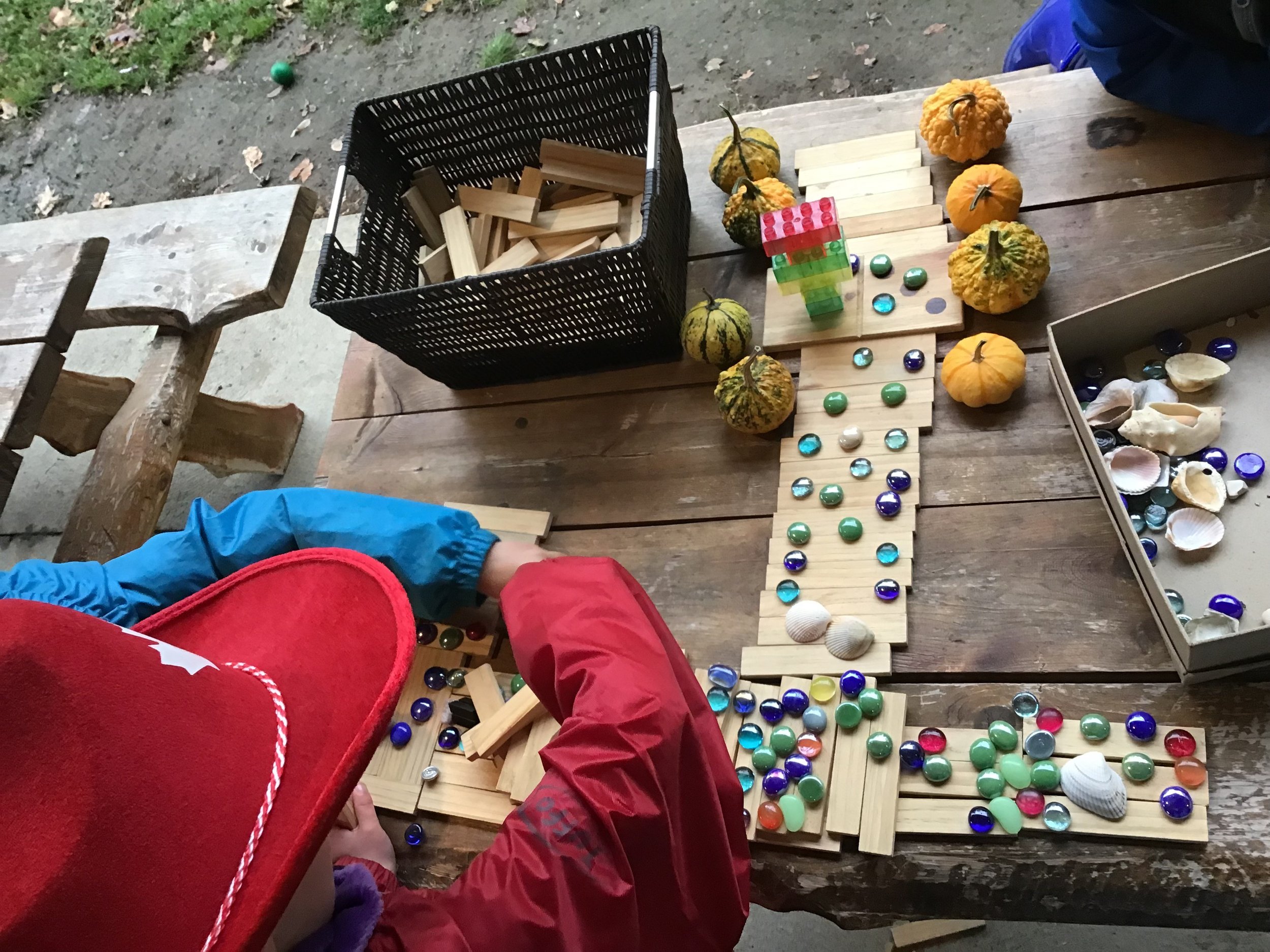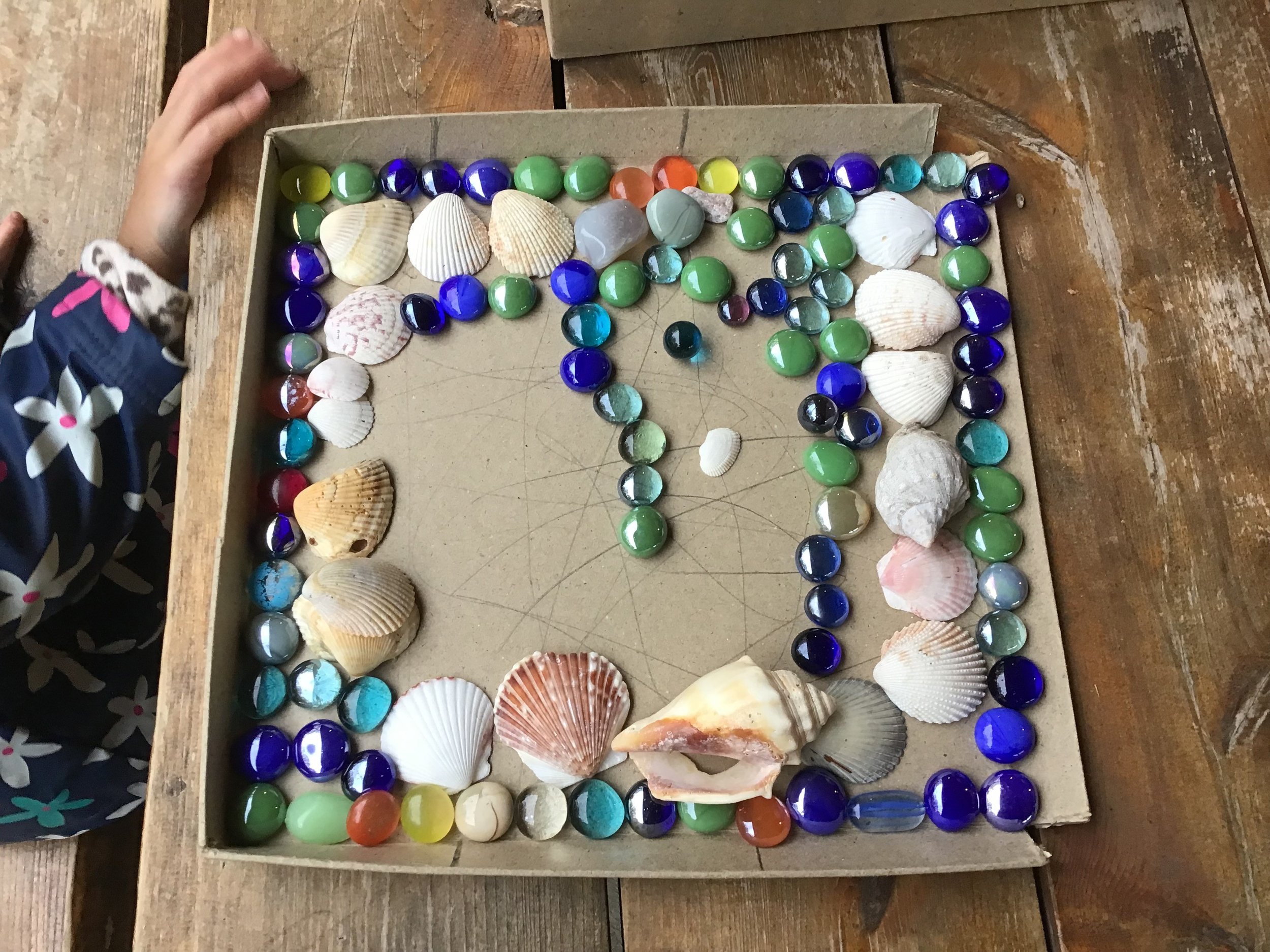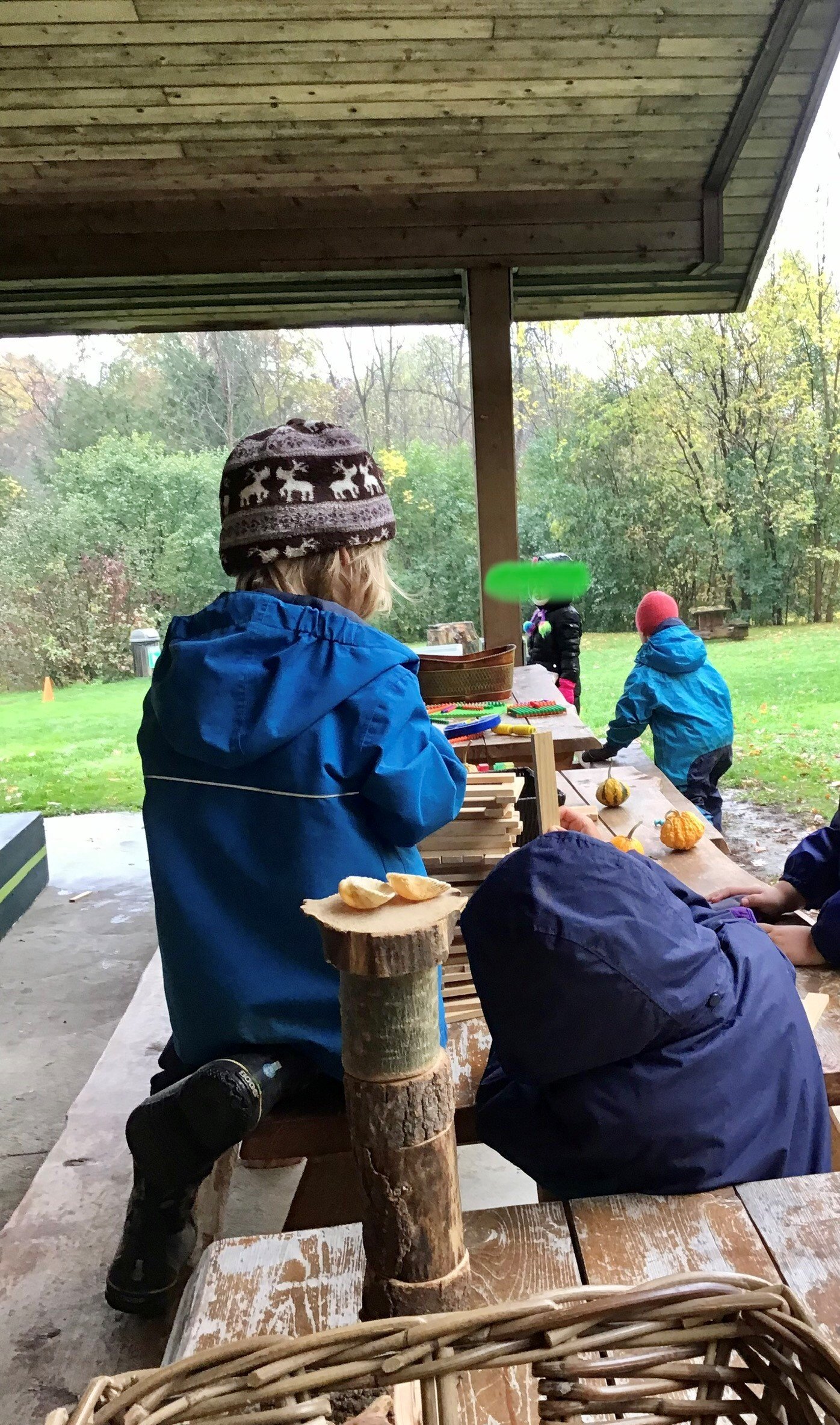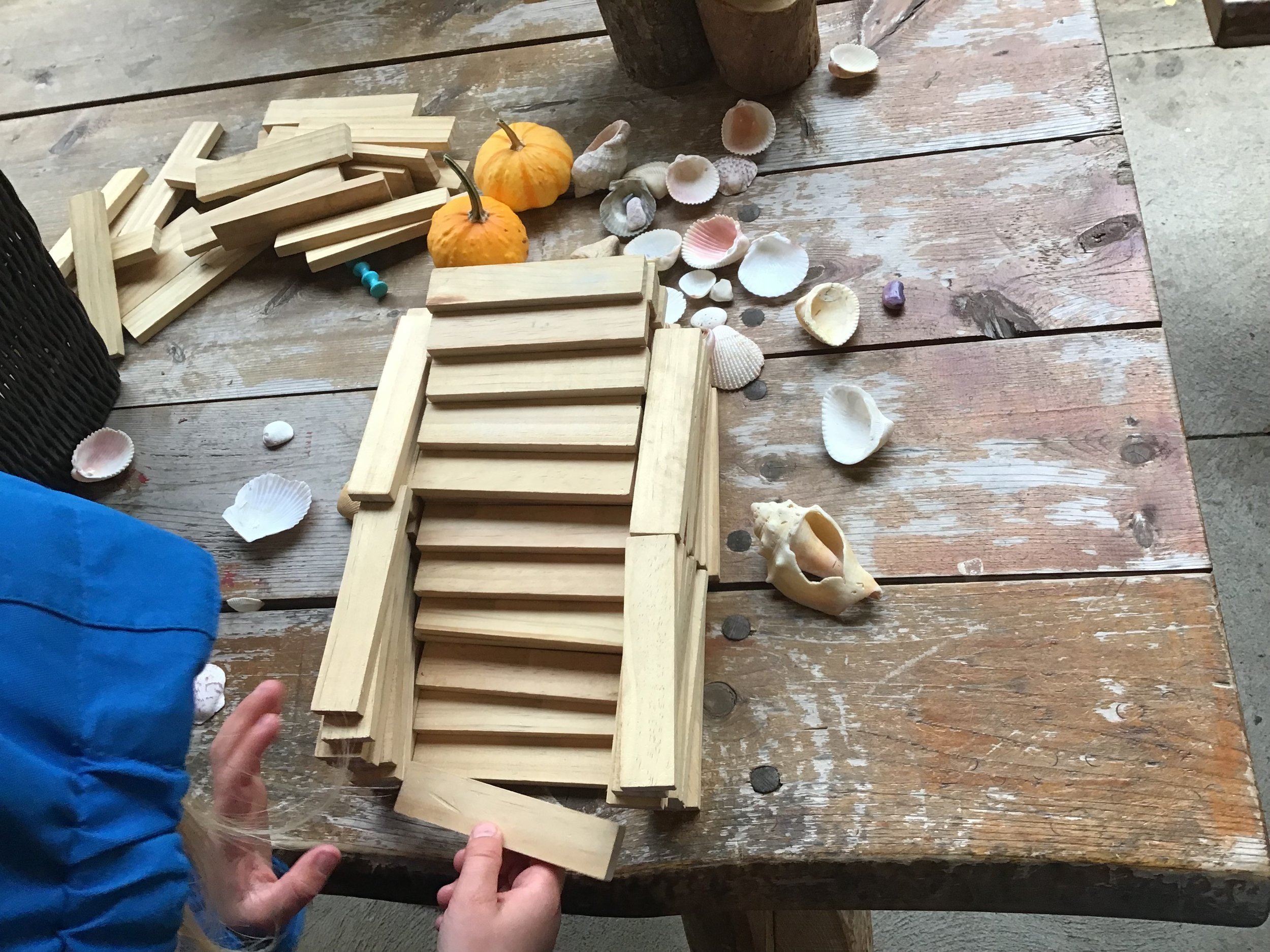Loose Materials in The Rain at Woodside National Historic Site
The invitations of loose parts and intelligent materials inspired us on this rainy late October day at Woodside. As soon as the Cedar A group arrived learning adventures, discussions, inquiries, creative expressions, deep contemplation, and learning emerged in our beautiful natural space.
As Simon Nicholson highlights in the Theory of Loose Parts:
‘In any environment, both the degree of inventiveness and creativity, and the possibility of discovery, are directly proportional to the number and kind of variables in it.” Simon Nicholson
The children requested to visit the Three Sisters Garden looking “for seeds to save for Spring”. Exploring the natural loose parts of the garden the children noticed some “silly beans” that started growing already. “They forgot that they need to wait till Spring time” – the children noted giggling.
Seasonal pedagogy focuses on exploring lifecycles throughout the seasons, our garden has been a marvelous Third Teacher in supporting our learning throughout the year. Natural loose parts such as seeds, leaves, sticks etc. engage us as a learning community in building systemic awareness of cyclical, and seasonal growth cycles. Seeing natural loose materials in the context of the seasons, the ecosystems, and the weather encourage us to think in terms of complex systemic interactions.
To refer to The Theory of Loose Parts, the degree of inventiveness, creativity, and the possibility of discovery energized by the creativity of the children took us on myriads of learning journeys. Several groups worked together on creating “gardens” and “towers” using gems, shells, gourds, and wood pieces. As the “magical worlds” appeared, discussions emerged regarding balancing, measuring, and space for the three dimensional projects. The children used wood pieces to measure the height and width of the towers, and used the wood pieces as “levels”, to ensure the tower remained “straight and balanced”. The projects created parallels between mathematical reasoning and phantasy play.
Other groups explored the properties of water and the interactions among loose parts and water. The children measured rain water into containers, and observed the water level rising as the rain fell. Loose materials were tested for buoyancy. The children observed that some objects floated, some sank and some natural materials such as leaves “levitated” in the water.
The wind as the carrier of loose parts was a focus of observation throughout the day, some children tested their umbrellas in the wind and described the force of the wind: “The wind is pulling me hard, it filled my umbrella!”.
Meegwetch to Dewe’igan, for her amazing story and song about water, and the beautiful parallels she drew among life, our health, our wellbeing, and water. Her teachings reminded us of the power of rapids, fast moving rivers that return to calmness as they join the sea. Thinking of the journey of water will remind us that hard times are followed by calm and soothing times. She warmed our bodies and hearts with Cedar Tea and stories about the cyclical movement of Water in Mother Nature.
Please visit the link above and explore the Theory of Loose Parts, by Simon Nicholson. Try to observe your family, your day at work, and pay attention to the loose materials you use in your daily routines, and in your professional life. How do loose materials enrich your life-long learning journey?
